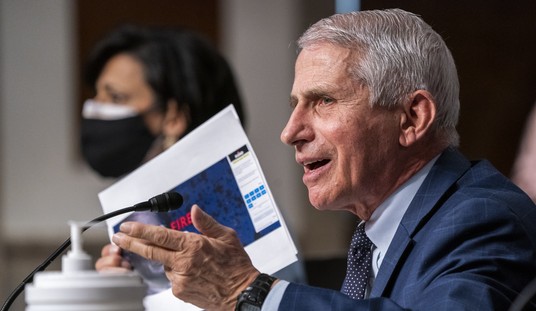For once, the AP uses its favorite adverb correctly:
The unemployment rate dropped unexpectedly in January to 9.7 percent from 10 percent while employers shed 20,000 jobs.
The Labor Department says the rate dropped because a survey of households found the number of employed Americans rose by 541,000. The job losses are calculated from a separate survey of employers.
The report also included an annual revision to the estimates of total payrolls, which showed there were 930,000 fewer jobs last March than previously estimated. The department also revised down its estimates for April through October of last year, adding another 433,000 job losses.
However, November’s numbers got a boost from 11,000 jobs created to 64,000 jobs created. The net losses in December went from 85,000 to 73,000. Another indicator doesn’t look as good, though. Tax collection on payroll dropped sharply in January, in the same way as last year (via Dog Soldier):
Taxes are another indicator of payrolls, specifically withheld income taxes. The daily Treasury Department statement tracks withheld income taxes. In January, income taxes withheld dropped about 9.4% from December, about the same as the drop from December 2008 to January 2009. December withholdings are sometimes inflated due to end-of-year bonuses. That the decline from December to January this year was the same as last argues that the direction of payroll jobs will track year-year.
Moving out of the double-digits on unemployment will be a political boost for Barack Obama, but the improvement is less dramatic than that. The civilian employment population (ie, looking for jobs) finally increased by 111,000 people, the first increase in several months, but over 1.5 million left the job force in 2009. Furthermore, the hiring mostly took place in the government sector:
Construction employment declined by 75,000 in January, with nonresidential specialty trade contractors (-48,000) accounting for the majority of the decline. Since December 2007, employment in construction has fallen by 1.9 million.
In January, transportation and warehousing employment fell by 19,000, due to a large job loss among couriers and messengers (-23,000).
Employment in manufacturing was little changed in January (11,000). After experiencing steep job losses earlier in the recession, employment declines moderated considerably in the second half of 2009. In January, job gains in motor vehicles and parts (23,000) and plastics and rubber products (6,000) offset small job losses elsewhere in the industry.
In January, temporary help services added 52,000 jobs. Since reaching a low point in September 2009, temporary help services employment has risen by 247,000.
Retail trade employment rose by 42,000 in January, after showing little change in the prior 2 months. Job gains occurred in January among food stores (14,000), clothing stores (13,000), and general merchandise retailers (10,000).
Health care employment continued to trend up in January. Ambulatory health care services added 15,000 jobs over the month.
In January, the federal government added 33,000 jobs, including 9,000 temporary positions for Census 2010. Employment in state and local governments, excluding education, continued to trend down.
It’s not as bad as people feared, but it’s not really good news, either. The bounce in retail suggests that people may be ready to spend, but the declines in most other areas show that there are still fewer of them who can.
Update: This passage seems like a key to understanding why the rate dropped:
In January, the number of persons unemployed due to job loss decreased by 378,000 to 9.3 million. Nearly all of this decline occurred among permanent job losers. (See table A-11.)
The number of long-term unemployed (those jobless for 27 weeks and over) continued to trend up in January, reaching 6.3 million. Since the start of the recession in December 2007, the number of long-term unemployed has risen by 5.0 million. (See table A-12.)
As before, shrinking the denominator of the population of jobseekers has the same effect as increasing the nominator of people holding jobs — it decreases the ratio of unemployment to the population. Also, according to this chart, December’s losses got adjusted to 150,000, not 73,000. We’re still trending downward.
Update II: The civilian employment population increased by 111,000, not the employment level as I originally wrote. Thanks to BizzyBlog for pointing out my error.
Update III: Here’s a relatively new chart from BLS to look at differing measures of unemployment:

U-3 is the published unempl0yment rate, while U-6 has become a lot more popular over the last couple of months as a measure of “true” unemployment. Both improved month on month when seasonally adjusted, which is good news. Without the seasonal adjustment, both jumped rather significantly. Most people use the seasonally-adjusted numbers when comparing for progress.









Join the conversation as a VIP Member